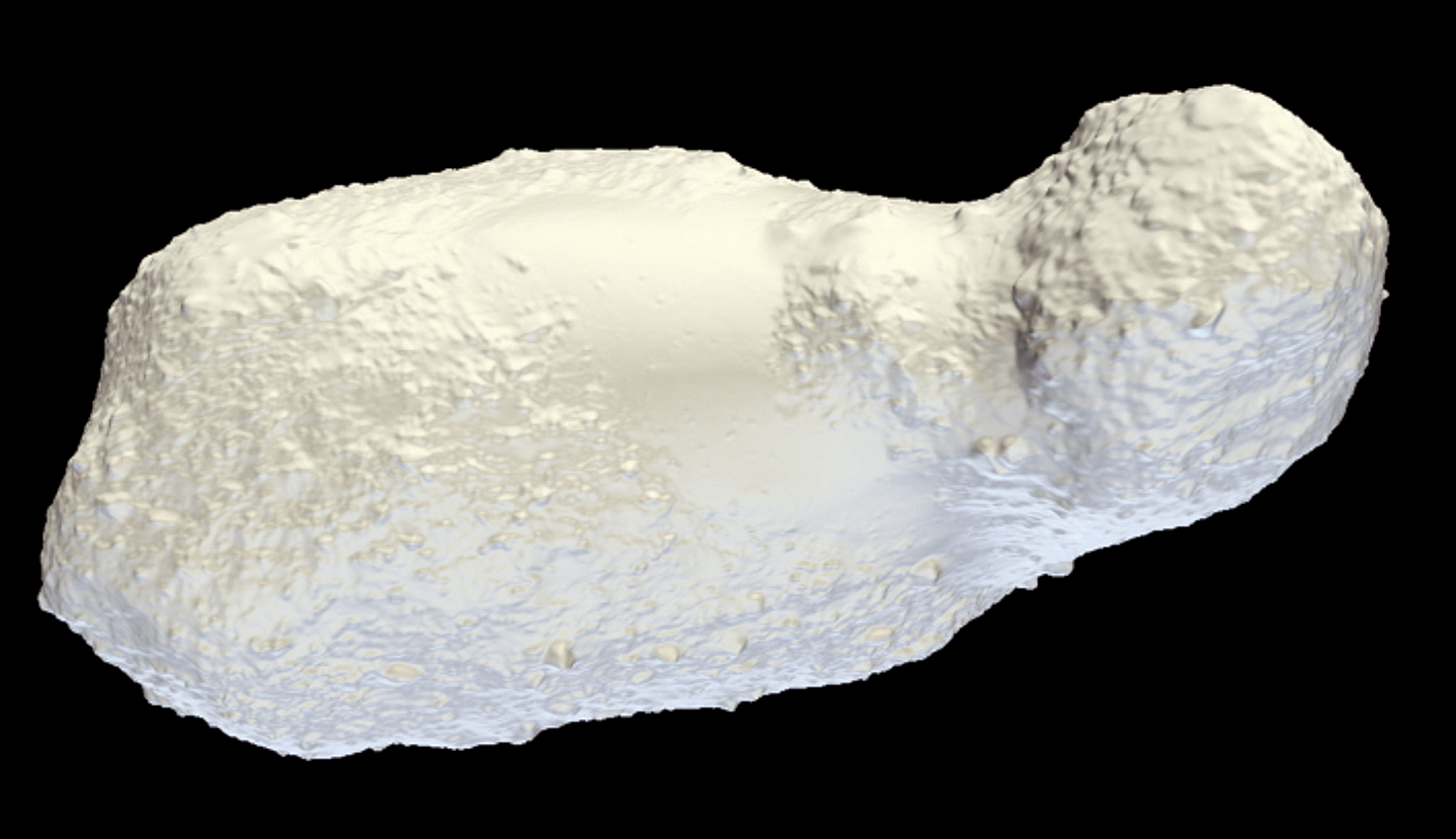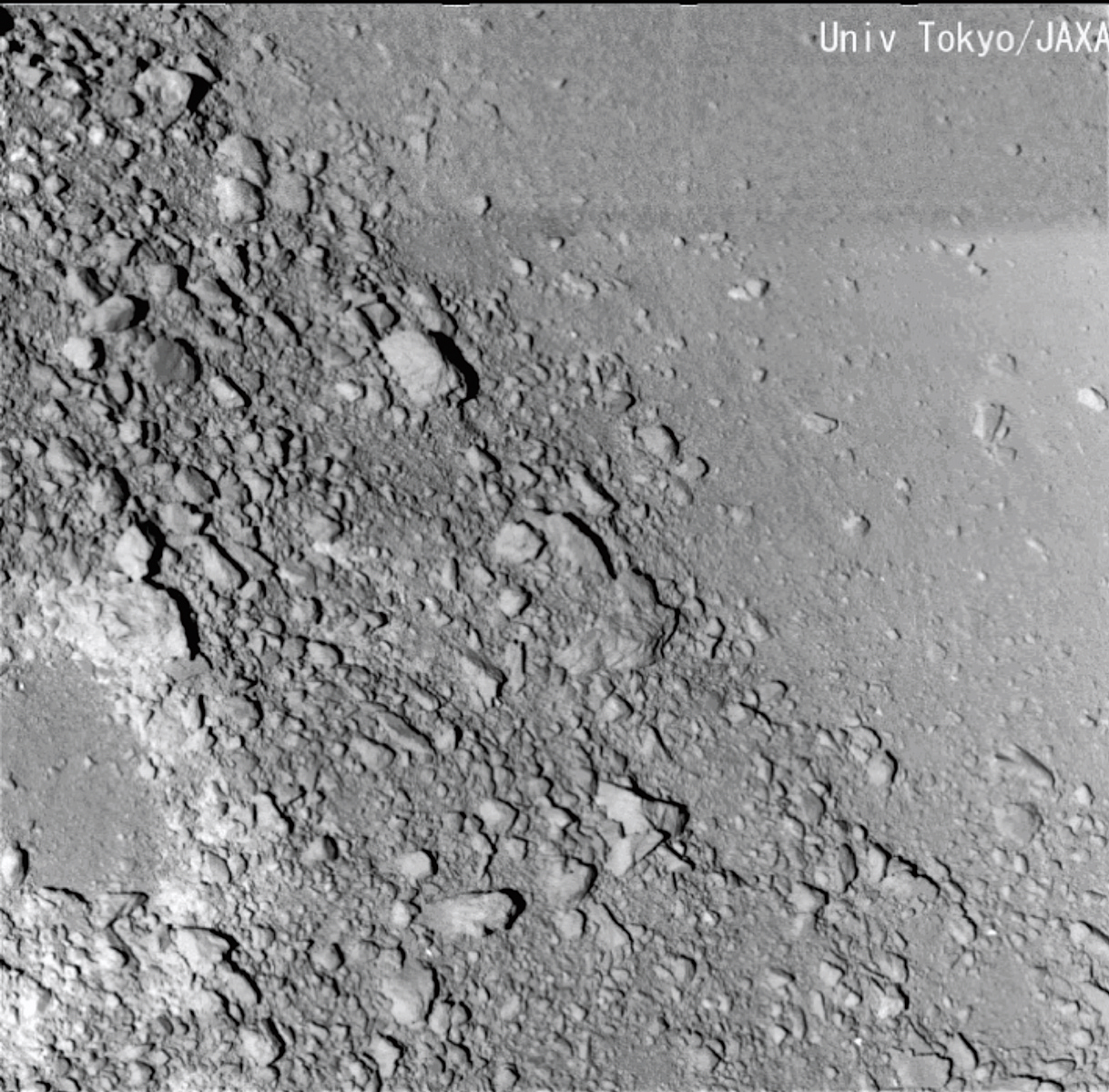B1
1/2,000 scale model of asteroid Itokaw
Itokawa (S-type) is the target asteroid of the Hayabusa mission and by far the smallest asteroid ever explored by spacecraft. In 2005, Hayabusa performed scientific observations of the asteroid including obtaining high-resolution images, as well as visible and near-infrared reflectance spectra. The displayed item is a 1/2,000-scale, 3D model of Itokawa based on the best numerical shape model developed from images obtained by Hayabusa. The dimensions of Itokawa are only about 535×294×209 m. Because of its low bulk density of 1.9 g/cm3, the asteroid is considered to be a rubble-pile asteroid, which literally means a pile of rocks. Itokawa displays both rough terrain, consisting of numerous boulders, and smooth terrain with generally smaller-scale materials when compared to the former. Amazingly, even under the asteroid’s very low gravity (lower than 1/10,000 compared to that of Earth), evidence of the movement of surface materials is found.
The Hayabusa made two touchdowns on Itokawa’s smooth terrain, named the MUSES-C Regio. Even though the original sampling plan could not be performed perfectly, thousands of very small particles were collected into the sample capsule and transported to the Earth in 2010. Thus, Hayabusa became the first sample-return mission from an asteroid. Ground-based observations indicate that the materials on an S-type asteroid, such as Itokawa, are similar to thermally metamorphosed LL chondrites, a remotely-based observation of which was directly validated by the Hayabusa mission. In situ observations
and return-sample analyses indicate that there originally was a ~20-km-diameter parent body, which was catastrophically disrupted into smaller fragments before accumulating and being directed into typical orbit of a near-Earth object. (Hideaki Miyamoto)


